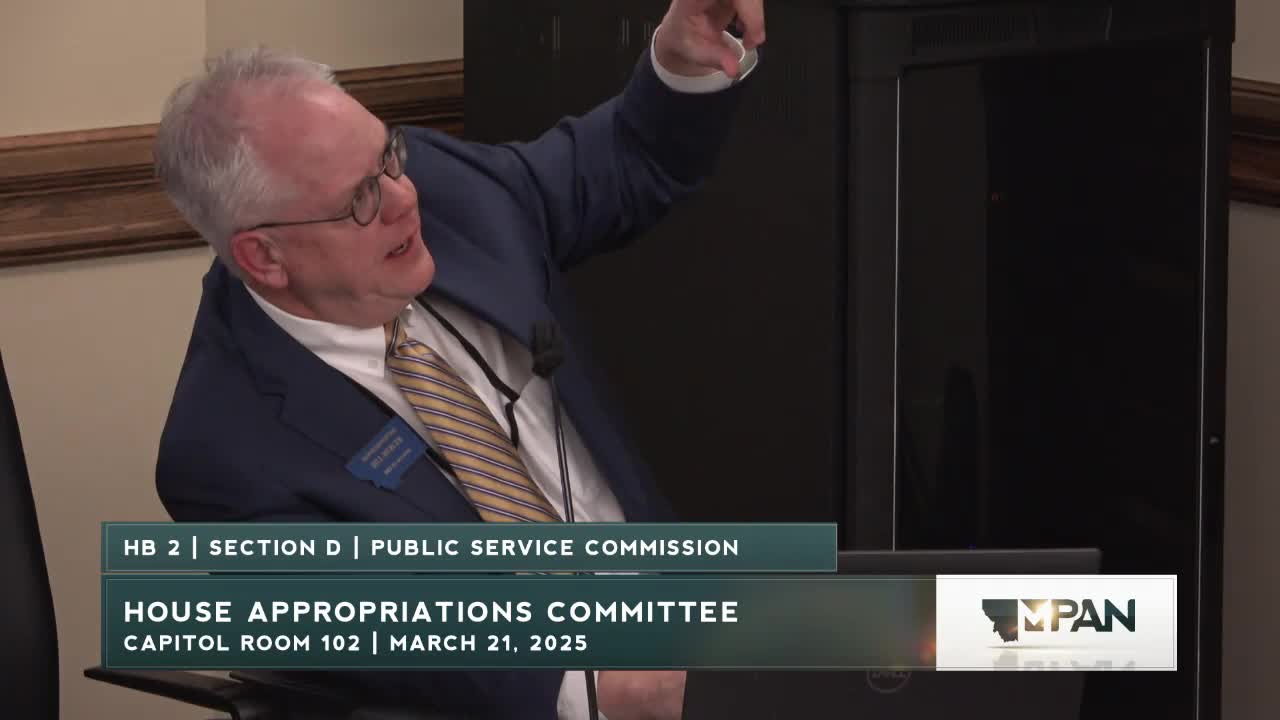Public Service Commission reviews railroad inspection program amid efficiency concerns
March 21, 2025 | 2025 Legislature MT, Montana
This article was created by AI summarizing key points discussed. AI makes mistakes, so for full details and context, please refer to the video of the full meeting. Please report any errors so we can fix them. Report an error »

In a recent meeting of the Montana House Appropriations Committee, discussions centered on the effectiveness of the state's railroad inspection program, raising critical questions about safety and resource allocation. The meeting, held on March 21, 2025, highlighted concerns regarding the current staffing levels and inspection capabilities of the Public Service Commission (PSC) in overseeing railroad safety.
A key point of contention was the adequacy of having only two inspectors responsible for car inspections, which some committee members argued is manageable due to the stationary nature of the cars during inspections. However, the challenge of inspecting the extensive railroad tracks with the same limited number of inspectors was questioned. One representative expressed skepticism about the efficiency of the track inspection program, suggesting that it may not significantly reduce derailments given the vast amount of track that needs to be covered.
In response, officials from the PSC emphasized that while they currently do not have dedicated track inspectors, they can audit railroad companies like BNSF to ensure compliance with safety protocols. They noted that the inspectors can utilize technology, such as sensors on trains, to monitor safety practices. However, the need for specialized training and certification for track inspectors was also acknowledged, indicating that expanding the inspection team would require significant time and resources.
The committee also discussed the importance of transparency in the inspection process. One representative suggested that providing a clear plan for inspections would help contextualize the outcomes of their efforts, allowing for better accountability and understanding of safety measures in place.
The meeting underscored the ongoing challenges faced by the PSC in maintaining railroad safety amid limited resources. As the committee prepares for future discussions, the need for a comprehensive approach to railroad inspections, including potential staffing increases and enhanced training, remains a priority. The implications of these discussions are significant, as they directly relate to public safety and the prevention of rail accidents, which are often linked to track failures. The committee's next steps will likely involve further evaluation of the inspection program and consideration of necessary adjustments to improve safety outcomes in Montana's rail system.
A key point of contention was the adequacy of having only two inspectors responsible for car inspections, which some committee members argued is manageable due to the stationary nature of the cars during inspections. However, the challenge of inspecting the extensive railroad tracks with the same limited number of inspectors was questioned. One representative expressed skepticism about the efficiency of the track inspection program, suggesting that it may not significantly reduce derailments given the vast amount of track that needs to be covered.
In response, officials from the PSC emphasized that while they currently do not have dedicated track inspectors, they can audit railroad companies like BNSF to ensure compliance with safety protocols. They noted that the inspectors can utilize technology, such as sensors on trains, to monitor safety practices. However, the need for specialized training and certification for track inspectors was also acknowledged, indicating that expanding the inspection team would require significant time and resources.
The committee also discussed the importance of transparency in the inspection process. One representative suggested that providing a clear plan for inspections would help contextualize the outcomes of their efforts, allowing for better accountability and understanding of safety measures in place.
The meeting underscored the ongoing challenges faced by the PSC in maintaining railroad safety amid limited resources. As the committee prepares for future discussions, the need for a comprehensive approach to railroad inspections, including potential staffing increases and enhanced training, remains a priority. The implications of these discussions are significant, as they directly relate to public safety and the prevention of rail accidents, which are often linked to track failures. The committee's next steps will likely involve further evaluation of the inspection program and consideration of necessary adjustments to improve safety outcomes in Montana's rail system.
View full meeting
This article is based on a recent meeting—watch the full video and explore the complete transcript for deeper insights into the discussion.
View full meeting
